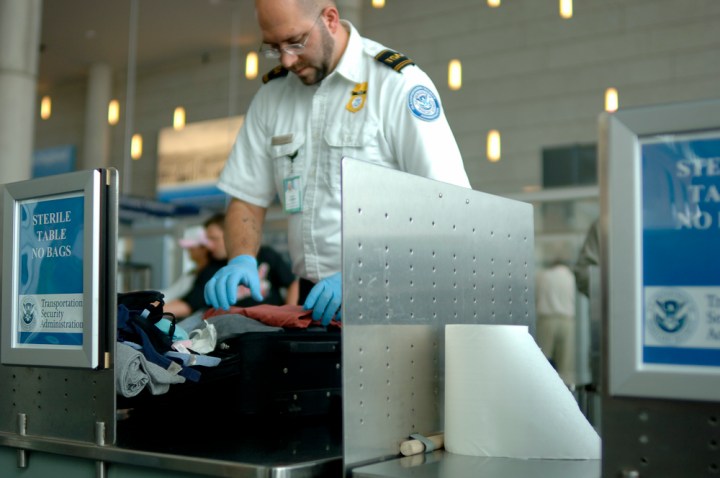
The prototypical baggage, according to the report, uses GPS and other hardware to precisely track its location. Right now it can relay that data to a smartphone or tablet in raw form, but it may eventually make smarter use of it — the two companies envision bags that alert their owners when they’ve left plane storage and reached the baggage carousel, for example. They may also reduce theft by chiming when they’ve been opened or have left the range of a paired device.
But that’s not all. “Smart luggage will be able to communicate with you but it needs to be able to do much more than just give its location,” Samsonite chief executive Ramesh Tainwala told the Daily Mail, and to that end the company’s developing motorized, self-propelling luggage. Still very much in the early stages, such bags could, thanks to retrofitted motors and proximity sensors, follow travelers from a configurable number of inches behind them.
That concept is still a stretch — thanks in large part to the bulky, 20-kilo motors required, and Tainwala admitted it “[isn’t] quite there yet” — but more firmly within reach is automated check-in. Samsonite is working with airlines on an integrated solution that’ll bypass the need to stop by the desk by communicating ownership, airline, and destination to self-service baggage weighing stations. It’s not a perfect solution — the company’s only working with Emirates, Lufthansa, and KLM Air France right now because airline systems are largely incompatible — but Tainwala says there’s no better fit for the bags’ wireless capabilities. “If you can communicate with your bag then why not the airlines?”
An unspecified future launch will likely align with Samsonite’s personalization program. Over the next few weeks, the company will debut an online portal that’ll allow customers to engrave their name, change the colors of locks and handles, and emblazon images on bags. “The most important thing is luggage must be seen as a beautiful object of desire and part of your personality,” said Tainwala. “When you walk with luggage it says something about you.”
If smart bags become ubiquitous, that’ll very literally be true.


